In this page we show wax moth pest in a beehive. How to get rid of the wax moth and graphic photos. The devastation they leave.
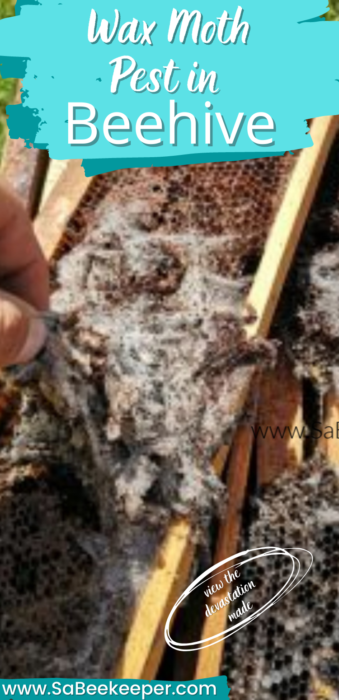
Regular Checks
To keep the hives in good order is the key, as well as having good hygiene of the hive.
Checking on the hives regular is a start, and one would quickly pick up a problem.
Sometimes this is a problem especially if this is your hobby and you have a full time job.
Wax Moth Pest in Beehive
The other reason the wax moth gets into hives is because the swarm is to small and can not guard the hive well.
To prevent this from happening to your unused wax combs you should store them in a cold place, as the larvae would be less active and a quick 24 hour freeze can kill larvae, or any other eggs laid.
The only way to get rid of all this infestation is to cut out what’s left of the wax pieces and web that is spun and burn it. Being very careful to get all the pupa and larvae or moths that are active.
The moth is very quick to escape and flies off to any other frames you have in the area.
Work in an enclosed space where there is no other frames or boxes.
Destroyed Hive
These are frames that unfortunately were found to late and the wax moth destroyed the hive.
As you can see the wax cones are non existent. Webs spun all over the combs, this makes it
very difficult to cut and scrape off the infected moths web. It’s a good idea to keep a bin handy and then make a fire and burn all. In case there are some eggs or larvae in that mess
and to prevent further infestation.
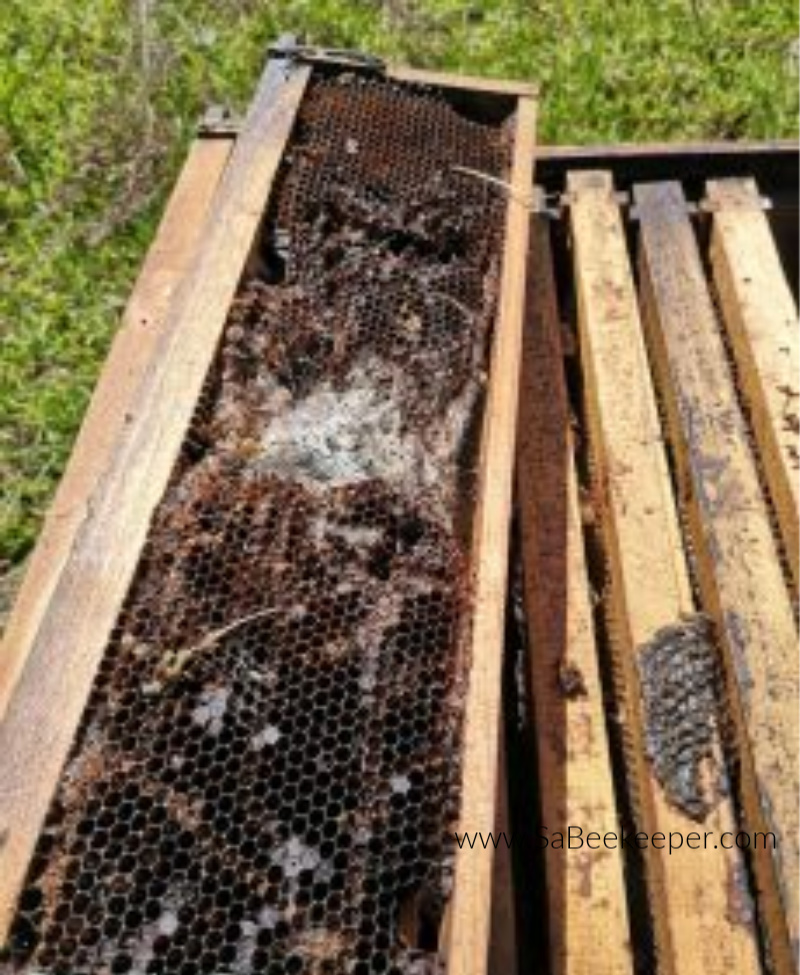
Learn about these problems in the pictures supplied. Wax moth pest in beehive.
Wax Moth Webs
The picture above shows the web been spun in the combs as it gets eaten.
Those webbed coverings you see below on the combs cells are eggs from the wax moth.
Also note the row of droppings from the hatched worm as it eats away at the comb.
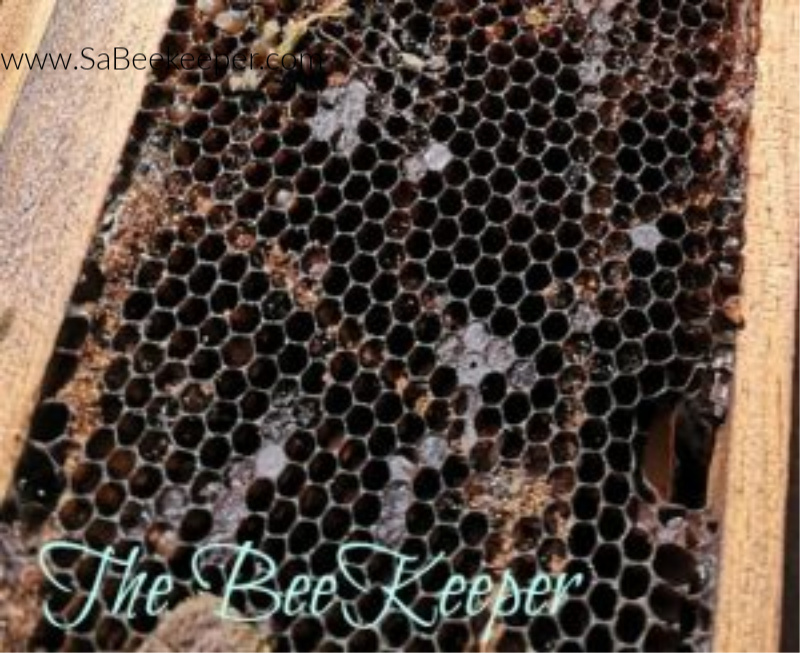
Learn more from pictures.
A wax comb totally destroyed by the moth, note the webs. All that can be done here is cut
out all the webbed combs and burn them, as well as scorch the frame or clean it very well.
Care must be taken not to do this where other frames or beehives are, but in an enclosed area.
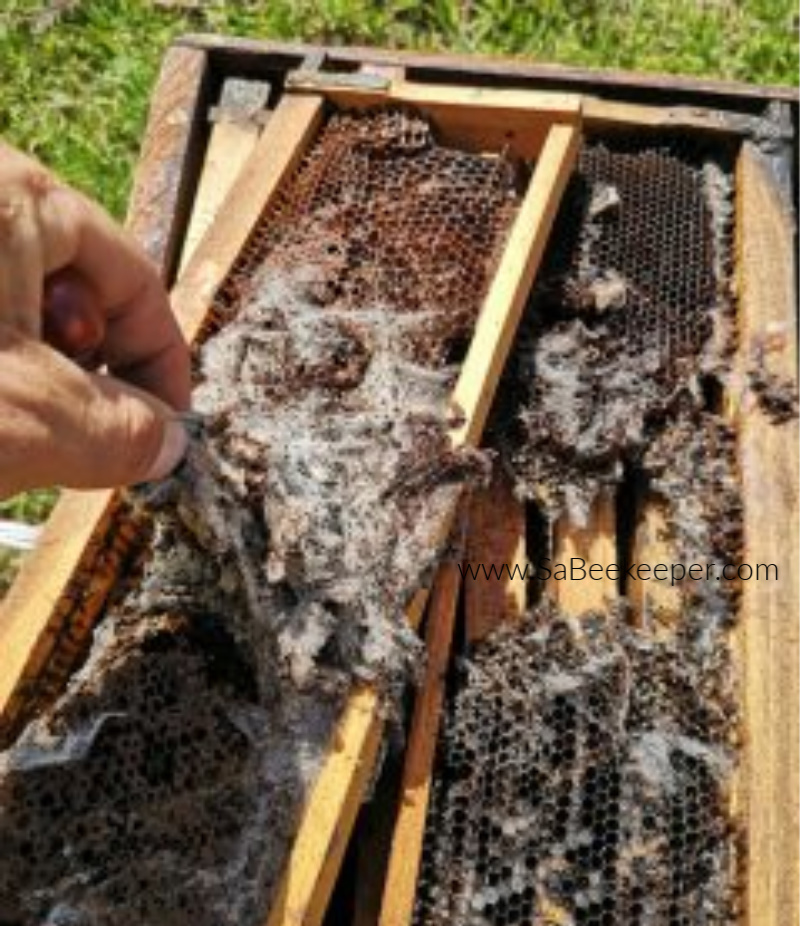
Wax Moth Cocoons
A hive infested with wax moth, see the white cocoons on the sides of the frames.
They love to hide in corners and sides.
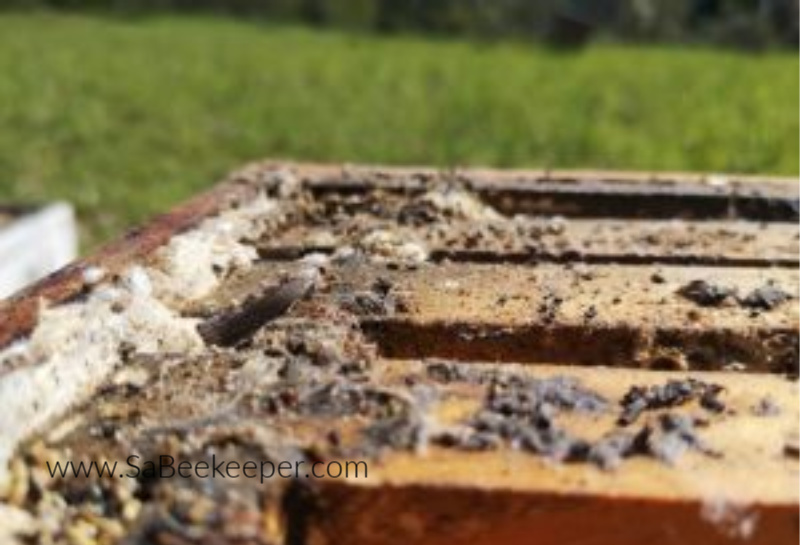
The cocoons are spun between and on the wood of the beehive box and the frames.
Note how they eat into the wood, totally making deep grooves.
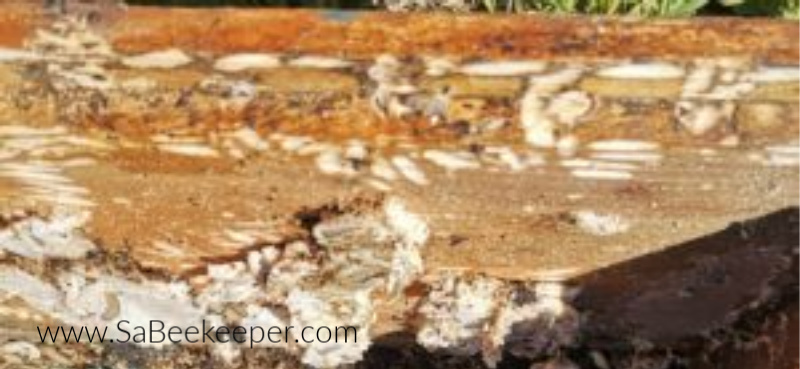
Cocoons are laid on the side of the frames that go into the bee boxes. Any space available is taken.
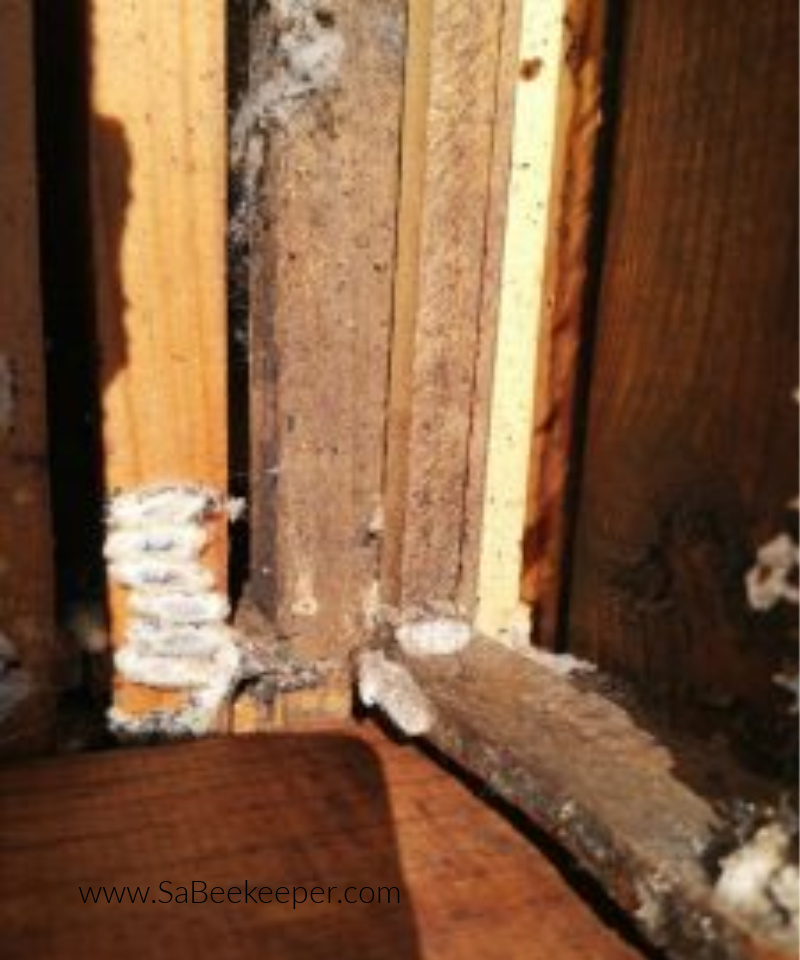
Below are the larvae that are still in the cocoons, (as the cocoon were cut open) on the side of the frames. Then they turn into a moth and start the vicious cycle again by laying eggs.
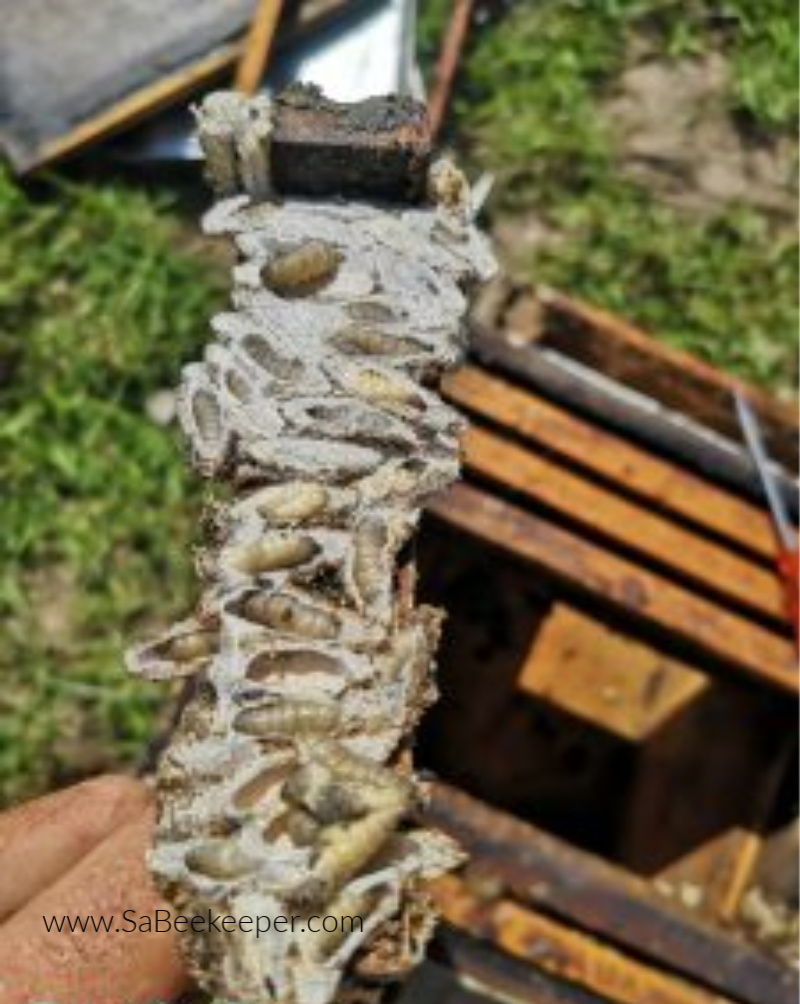
Beekeeper busy cleaning and cutting of the cocoons that are hidden away in corners.
These wax moths destroy the hives.
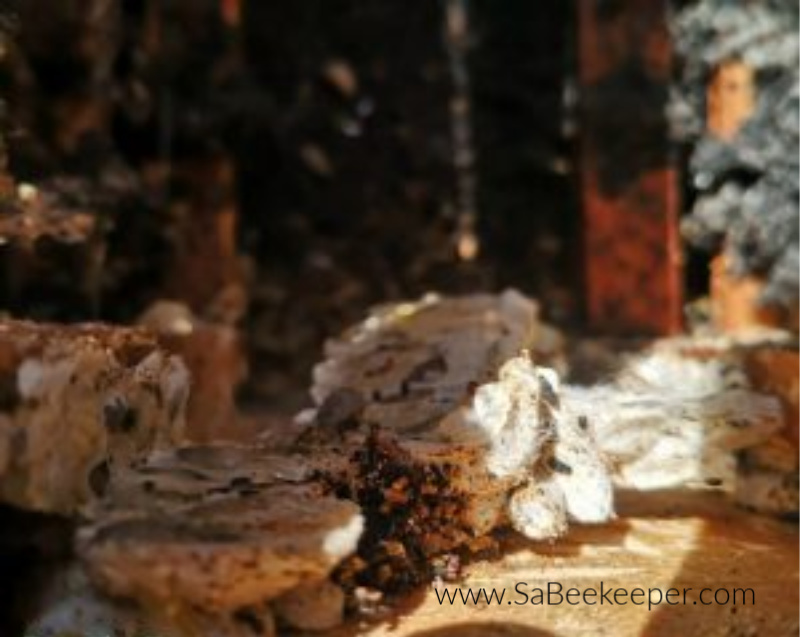
If not sorted out they will infest all the hives in the area.
learn about other predators for bees.
Leave a Reply